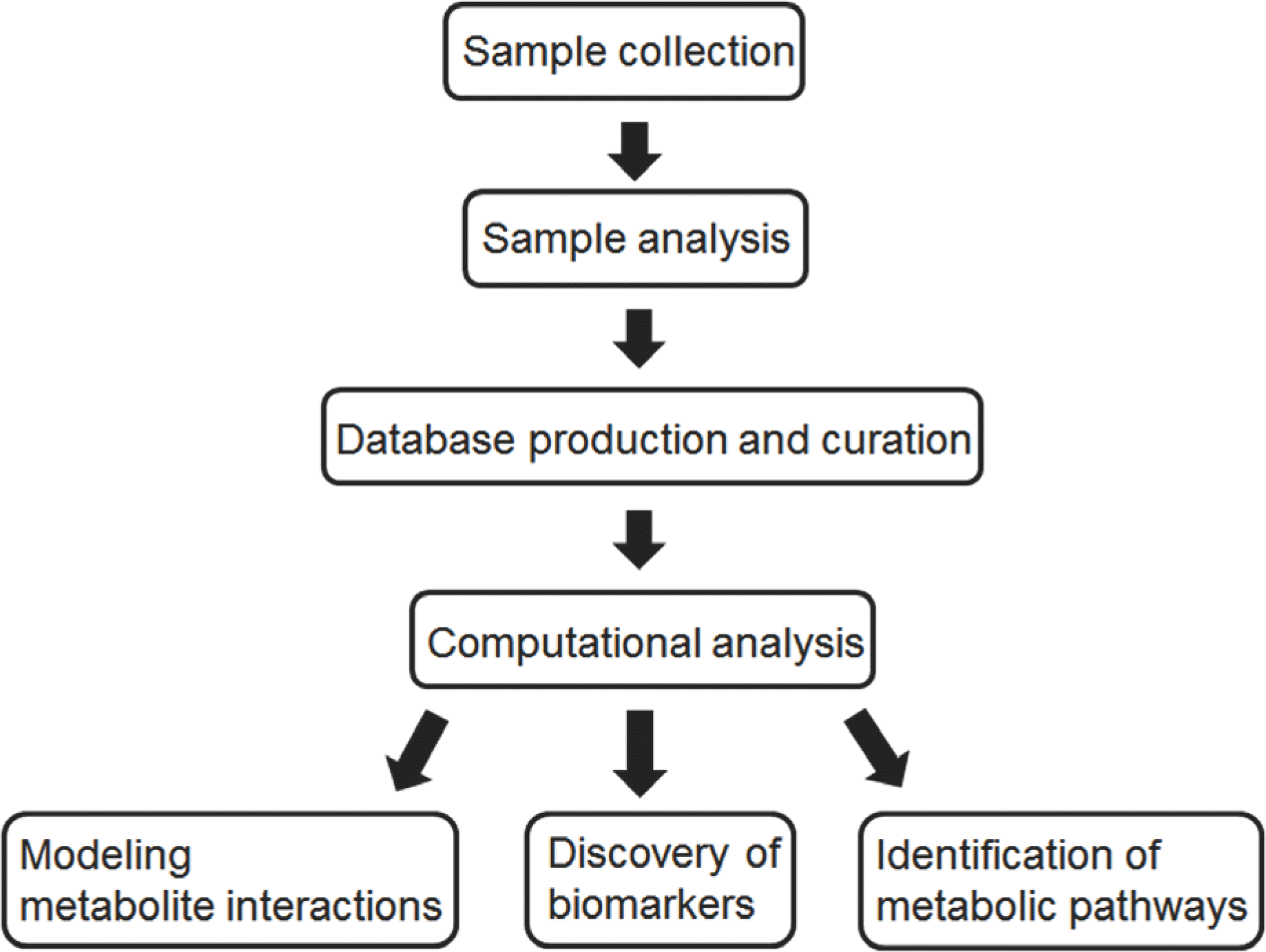Abstract
Metabolomics, a novel “omics” platform, is a powerful tool for the discovery of clinically useful biomarkers and biochemical processes to improve diagnosis and therapy. Through the use of advanced analytical technologies, metabolomics enables the assessment of comprehensive metabolic profiles that are affected by both genotype and environmental factors. Recently, attention has been focused on the concept of pharmacometabolomics, an emerging field that is derived from metabolomics. Pharmacometabolomics is focused on the use of individual metabolic signatures for the prediction and evaluation of drug efficacy and safety, eventually accelerating clinical pharmacology toward personalized drug therapy.
References
1. Corona G, Rizzolio F, Giordano A, Toffoli G. Pharmaco-metabolomics: an emerging "omics" tool for the personalization of anticancer treatments and identification of new valuable therapeutic targets. J Cell Physiol. 2012; 227:2827–2831.

2. Phapale PB, Kim SD, Lee HW, Lim M, Kale DD, Kim YL, et al. An integrative approach for identifying a metabolic phenotype predictive of individualized pharmacokinetics of tacrolimus. Clin Pharmacol Ther. 2010; 87:426–436.

3. Venkataramanan R, Swaminathan A, Prasad T, Jain A, Zuckerman S, Warty V, et al. Clinical pharmacokinetics of tacrolimus. Clin Pharmacokinet. 1995; 29:404–430.

4. Kaddurah-Daouk R, Baillie RA, Zhu H, Zeng ZB, Wiest MM, Nguyen UT, et al. Lipidomic analysis of variation in response to simvastatin in the Cholesterol and Pharmacogenetics Study. Metabolomics. 2010; 6:191–201.

5. Kaddurah-Daouk R, Baillie RA, Zhu H, Zeng ZB, Wiest MM, Nguyen UT, et al. Enteric microbiome metabolites correlate with response to simvastatin treatment. PLoS One. 2011; 6:e25482.

6. Trupp M, Zhu H, Wikoff WR, Baillie RA, Zeng ZB, Karp PD, et al. Metabolomics reveals amino acids contribute to variation in response to simvastatin treatment. PLoS One. 2012; 7:e38386.

7. Yerges-Armstrong LM, Ellero-Simatos S, Georgiades A, Zhu H, Lewis JP, Horenstein RB, et al. Purine pathway implicated in mechanism of resistance to aspirin therapy: pharmacometabolomics-informed pharmacogenomics. Clin Pharmacol Ther. 2013; 94:525–532.

8. Shin KH, Choi MH, Lim KS, Yu KS, Jang IJ, Cho JY. Evaluation of endogenous metabolic markers of hepatic CYP3A activity using metabolic profiling and midazolam clearance. Clin Pharmacol Ther. 2013; 94:601–609.

9. Diczfalusy U, Kanebratt KP, Bredberg E, Andersson TB, Bottiger Y, Bertilsson L. 4beta-hydroxycholesterol as an endogenous marker for CYP3A4/5 activity. Stability and half-life of elimination after induction with rifampicin. Br J Clin Pharmacol. 2009; 67:38–43.




 PDF
PDF ePub
ePub Citation
Citation Print
Print



 XML Download
XML Download